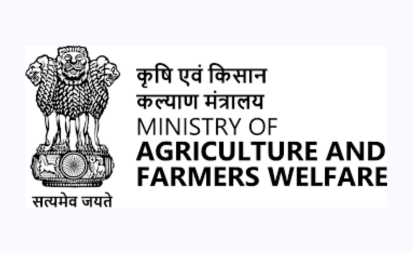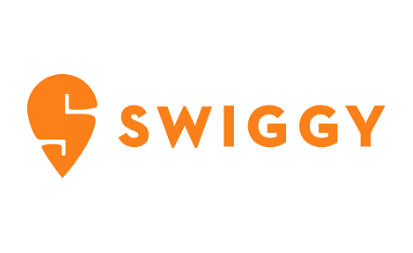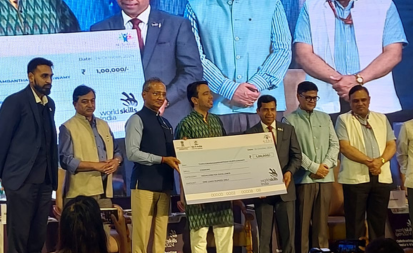Cultivation Of Different Types Of Millets
To create domestic and global demand and to provide nutritional food to the people, Government of India had proposed to the United Nations for declaring year 2023 as International Year of Millets (IYM). The proposal

To create domestic and global demand and to provide nutritional food to the people, Government of India had proposed to the United Nations for declaring year 2023 as International Year of Millets (IYM). The proposal of India was supported by 72 countries and United Nations General Assembly (UNGA) declared 2023 as International Year of Millets during March, 2021. The Government of India has taken a proactive multi-stakeholder engagement approach (engaging various central government Ministries/Departments, States/UTs, farmers, start-ups, exporters, retail businesses, hotels, Indian Embassies etc.) to achieve the objectives of IYM 2023 and taking Indian millets globally.
The focus during IYM-2023 was to enhance production and productivity, consumption, export, strengthening value chain, branding, creating awareness for health benefits etc. The
Government of India has organized various events to make it peoples’ movement so that the Indian millets, recipes, value added products be promoted globally. Millets were promoted during the G20 presidency in India, Millet Culinary carnival, International Trade Events, Chef’s Conference, exhibition of Farmers Producer Organizations (FPOs), road shows, kisan melas, Chef’s training for paramilitary forces, ASEAN India Millet Festival at Indonesia and Delhi etc.
A key event organized towards International Year of Millets was the Global Millets (Shree Anna) Conference, held from 18th – 19th March 2023 at IARI, Pusa Campus, New Delhi which was inaugurated by the Hon’ble Prime Minister and the exhibition on millets was further extended by three days. To make India a global hub for ‘Shree Anna’, the Indian Institute of Millets Research (IIMR), Hyderabad has been declared as the Global Centre of Excellence for sharing best practices, research and technologies at the national and international level.
The Indian Institute of Millet Research (IIMR), Hyderabad is also providing training to the farmers, women farmers, home makers, students and young entrepreneurs on manufacturing of value-added millet food products, daily recipes etc., and supporting them to establish self-enterprise. The institute has also developed value-added technologies include “Ready to Eat” and “Ready to Cook” for millet foods, branding of millet foods under “Eatrite” tag, organized awareness programmes, agri-business incubator, technology business incubators etc.
The new Regional Research Centre for Bajra at Gudamalani, near Barmer, Rajasthan has been inaugurated on 27th September, 2023. To strengthen the research collaboration and public awareness of millets globally, a new initiative viz., “Millets and Other Ancient Grains International Research Initiative (MAHARISHI)’’ has been adopted during the G20 Presidency.
The Ministry of Food Processing Industries (MoFPI) has approved the Production Linked Incentive Scheme for Food Processing Industry for Millet-based products (PLISMBP) for implementation during 2022-23 to 2026-27 with an outlay of Rs. 800 crores. Millets are also included under the Poshan Abhiyan of the Ministry of Women and Child Development. Further, the Ministry of Food and Public Distribution has revised its guidelines to increase the procurement of millets under the Targeted Public Distribution System (TPDS), Integrated Child Development Services (ICDS) and Mid-Day Meal.
An Export Promotion Forum dedicated to promotion of millets in the international market has been set up to facilitate promotion, marketing and development of millets exports from India. Under the Eat Right campaign, the Food Safety and Standards Authority of India (FSSAI) is creating awareness to promote the use of millets as part of a healthy and varied diet. To encourage consumption of Shree Anna among government employees, all Government offices have been advised to include Shree Anna snacks in departmental trainings/meetings and Shree Anna based food items in departmental canteens.
In order to increase the production & productivity of millets (Shree Anna), the
Department of Agriculture and Farmers Welfare (DA&FW) is implementing a Sub-Mission on Nutri-Cereals (Millets) under National Food Security Mission (NFSM) in all districts of 28 States & 2 Union Territories viz. Jammu & Kashmir and Ladakh. The Nutri-Cereals (millets) such as Sorghum (Jowar), Pearl Millet (Bajra), Finger Millet (Ragi/Mandua), Minor Millets i.e., Foxtail Millet (Kangani/Kakun), Proso Millet (Cheena), Kodo Millet (Kodo), Barnyard Millet (Sawa/Sanwa/ Jhangora), Little Millet (Kutki) and two Pseudo Millets Buck-wheat (Kuttu) and Amaranthus (Chaulai) are covered under NFSM programme.
Under NFSM–Nutri Cereals, the incentives are provided to the farmers, through the States/UTs, on crop production and protection technologies, cropping system based demonstrations, production & distribution of certified seeds of newly released varieties/hybrids, Integrated Nutrient and Pest Management techniques, improved farm implements/tools/resource conservation machineries, water saving devices, capacity building of farmers through trainings during cropping season, organizing events/workshops, distribution of seed minikits, publicity through print and electronic media etc.
In addition, Government of India also provides flexibility to the states for state specific needs/priorities under Rashtirya Krishi Vikas Yojana (RKVY). The states can promote Millets (Shree Anna) under RKVY with approval of State Level Sanctioning Committee (SLSC) headed by Chief Secretary of the State. In addition, states such as Assam, Bihar, Chhattisgarh, Karnataka, Madhya Pradesh, Maharashtra, Odisha, Rajasthan, Tamil Nadu, Uttarakhand and Uttar Pradesh have initiated Millet Missions in the States to promote millets.
This information was given by the Union Minister of Agriculture and Farmers’ Welfare, Shri Shri Arjun Munda in a written reply in Rajya Sabha today.
—–
 English
English French
French German
German Italian
Italian




